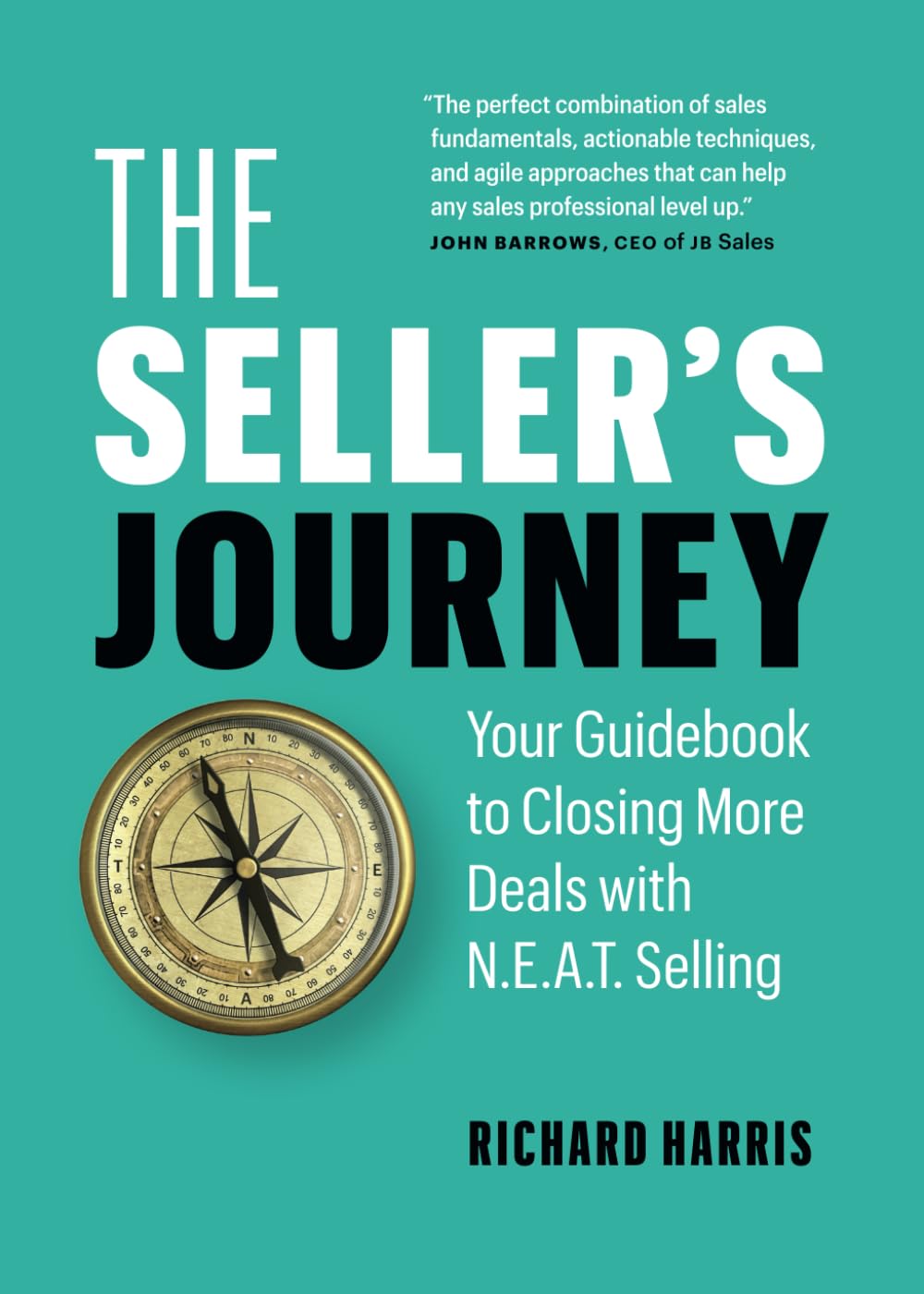![]()

The Seller’s Journey by Richard Harris introduces the N.E.A.T. Selling framework—a human-centered approach that blends proven tactics, emotional intelligence, and authentic connection. Packed with real-world insights and psychological depth, this book helps salespeople build trust, guide the buyer’s journey, and sell with both heart and skill.
Chapters of N.E.A.T. Selling
The book The Seller’s Journey: Your Guidebook to Closing More Deals with N.E.A.T. Selling by Richard Harris is structured around his N.E.A.T. Selling philosophy, methodology, and process. It specifically brings together thirteen sales tactics that serve as a “sales compass” for sellers.
The book is organized into two main parts: foundational mindset and tactical execution, with 13 specific sales tactics that operationalize the N.E.A.T. framework.
Each chapter provides a blend of mindset, questioning strategy, and tactical advice to help sellers implement N.E.A.T. Selling. The book is designed to be immediately actionable, with each tactic or section offering a practical step that can be integrated into daily sales activity.
Part 1: Mindset, Psychology, and Foundations
- Sales Mindset & Decision-Making
The opening chapters focus on the importance of mindset in sales and how human psychology—especially emotional and instinctual drivers—shapes buyer behavior. Harris discusses how understanding these drivers allows sellers to build trust and “earn the right” to ask meaningful questions. - Respect Contracts
Early in the book, Harris introduces the concept of “Respect Contracts,” which are agreements between seller and buyer that foster mutual trust and set expectations for open, honest dialogue throughout the sales process.
Part 2: Tactical Implementation—The 13 Sales Tactics
Each of the 13 tactics is designed to help sellers put N.E.A.T. Selling into action.
1. Need
- Identifying True Needs
Chapters on “Need” teach sellers to dig beneath surface-level requirements, using probing, open-ended questions to uncover the prospect’s real pain points and goals.- Implementation: Practice active listening, ask one question at a time, and allow space for the prospect to elaborate.
2. Economic Impact
- Quantifying Value
These chapters focus on connecting the prospect’s problems to tangible business outcomes. Sellers learn to ask about the costs of current processes and the potential ROI of solving those problems.- Implementation: Use financial impact questions to demonstrate how your solution affects the bottom line and to prioritize high-value opportunities.
3. Access to Authority
- Mapping Decision-Makers
Tactics here help sellers identify who actually holds buying power and how to navigate complex stakeholder environments.- Implementation: Ask targeted questions to determine who is involved in the decision, their influence, and how to gain access to key authorities.
4. Timeline
- Establishing Urgency
These chapters guide sellers in uncovering the prospect’s timeline for action, understanding urgency, and aligning the sales process accordingly.- Implementation: Ask about deadlines, upcoming milestones, and the consequences of inaction to prioritize deals and tailor follow-up.
Additional Tactical Guidance
- Questioning Techniques
Harris provides scripts and frameworks for asking the right questions at the right time, emphasizing the importance of empathy, curiosity, and tailoring your approach to each buyer. - Negotiation & Language
Chapters include tactical advice on negotiation (e.g., handling procurement, stopping discounting) and language use (e.g., the power of “and” vs. “but” in conversations). - Practical Tools & Real-World Scenarios
The book is filled with actionable checklists, psychological insights, and stories from Harris’s own sales career to illustrate how to apply the N.E.A.T. process in real situations
